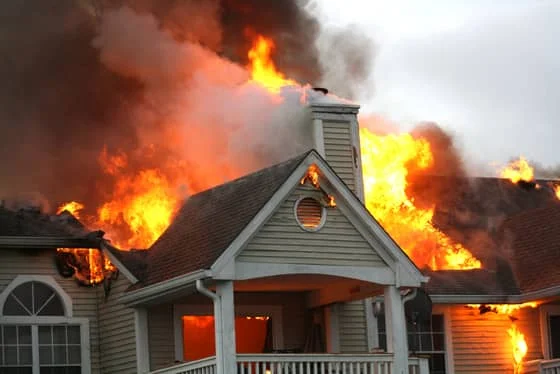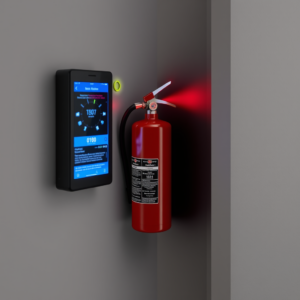How to Put Out an Electrical Fire and What To Do?
The aftermath of electrical fires can be tragic, from harming property to risking the lives of family members. With the frequency of such fires on the rise, understanding how to stop electrical fire incidents is crucial for homeowners and anyone concerned about safety.
Recent Record of Electrical Fires
Over the last three years, the incidences of electrical fires being reported have risen sky high resulting in the destruction of many homes. The National Fire Protection Association (NFPA) estimates that 30,000 electrical fire-related incidents occur every year. These fires cause nearly 400 deaths, almost 1400 injury cases, and property losses exceeding 1.5 billion dollars.
It has wide ranging effects on the homeowners. Many of whom not only lose homes but also a lifetime of memories and valuables. Usually, these caused long recovery periods, and economic stagnation as the victims try to adjust to the new state of their lives. Recognizing the signs and understanding how to stop electrical fire situations in your home can be lifesaving.
Signs of an Electrical Fire
One of the first steps in preventing electrical fires is understanding the signs that may indicate a potential hazard. It’s imperative to remain vigilant and aware of any unusual activities around your home’s electrical system.
-
Flickering Lights
Flickering or dimming lights can signify a serious issue with your electrical wiring. This might be caused by a power surge or damaged wiring, both of which should be addressed immediately. If, for example, you see some lights flickering without any clear frequency, it is better to call a qualified electrician and let them look at the problem.
-
Burning Smell
The constant presence of a burning smell, particularly one that has a burnt plastic smell, is a serious cause for concern. This is usually the result of wires that have become excessively hot and can if ignored, catch fire. If you detect such an odor, it’s essential to turn off your electrical system at the main breaker and call a professional.
-
Discolored Outlets
Outlets that appear discolored or scorched indicate excessive heat and potentially dangerous wiring behind the walls. These kinds of warning signals must always be taken into account since they have a potential to develop into a serious risk of electric fire if the issues are not resolved in time.
Immediate Actions When Discovering an Electrical Fire
Knowing how to stop electrical fire incidents quickly and safely is crucial. In the unfortunate event of an electrical fire occurring in your residence, here is a step-by-step procedure you can follow for effective fire management.
Step 1: Disconnect the Power Source
The first action you should take when encountering an electrical fire is to disconnect the power source. If possible, either cut off the power supply by switching off the circuit breaker or else unplug the device causing the fire. This will avoid allowing the fire to escalate further via the electrical system.
 Step 2: Use a Fire Extinguisher
Step 2: Use a Fire Extinguisher
If the fire is small and manageable, use a Class C fire extinguisher designed for electrical fires. Pointing the extinguisher’s nozzle over the flame won’t help put the fire out. Always aim at the fire’s base to help extinguish the flames. Water should not be used as it is a good conductor of electricity and it may cause more harm than good.
Step 3: Evacuate and Call Emergency Services
If the fire continues to spread despite your efforts, evacuate the premises immediately. Make certain that all persons leave the premises completely and then take shelter and inform the authorities. Never attempt to re-enter the building until professionals declare it safe.
Preventive Measures
Prevention is always better than cure. By taking proactive steps, you can significantly reduce the risk of an electrical fire in your home.
-
Regular Inspections
Schedule regular inspections of your home’s electrical system by a qualified electrician. This will help identify potential hazards before they escalate into dangerous situations. Routine checks ensure that wiring, outlets, and breaker panels are in good condition.
-
Avoid Overloading Circuits
Never overload electrical circuits by plugging in too many devices. For better safety in using multiple devices, employ power strips that have circuit breakers integrated into them. Also, use different sockets for the devices to eliminate the possibility of overloading one circuit.
-
Install Smoke Alarms
Install functional smoke alarms at home, especially in smoke prone areas like the kitchen and laundry. Test alarms monthly and replace batteries at least once a year to ensure they remain operational.
What to Do After the Fire is Out
Once the fire is extinguished, there are several crucial steps to ensure ongoing safety and begin the recovery process.
-
Professional Inspection
Even if you successfully extinguish the fire, it’s essential to have a professional inspect the area for hidden damages. An electrician can examine the system’s health and suggest repairs or replacements which would minimize the possibility of a recurrence.
-
Contact Insurance Providers
Reach out to your insurance provider to report the incident and initiate the claims process. Taking pictures and writing descriptions of the damage can help in making the claims process quick.
-
Understanding Who Buys Fire Damaged Homes
If the fire has caused extensive structural damage, consider exploring options with companies who buys fire damaged homes. They can offer valuable assistance in selling the property, allowing you to move forward more swiftly.
Conclusion
Electrical fire safety is a critical component of homeownership. By recognizing potential hazards, responding promptly to emergencies, and implementing preventive measures, you can greatly reduce the risk of electrical fires in your home. Knowledge and preparedness are your greatest allies in safeguarding your property and loved ones.
Share this guide with friends and family to raise awareness about electrical fire safety. Together, we can create safer environments for everyone.



 Step 2: Use a Fire Extinguisher
Step 2: Use a Fire Extinguisher